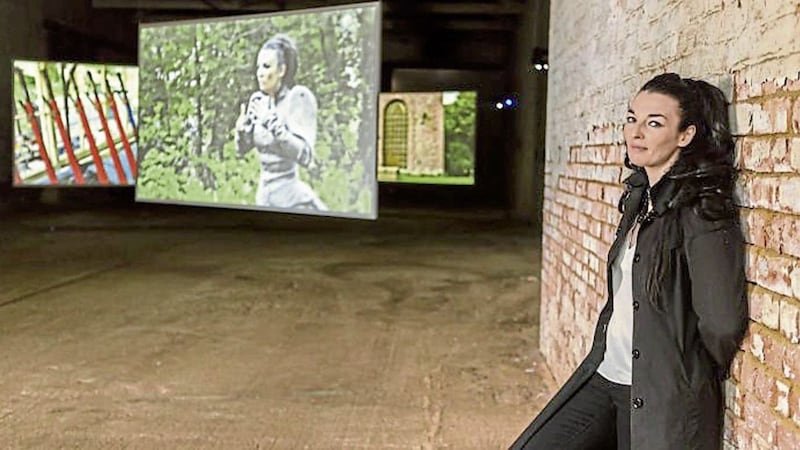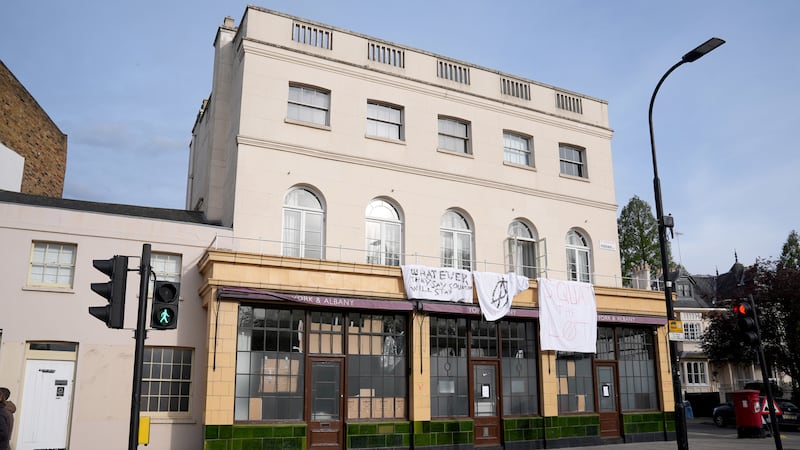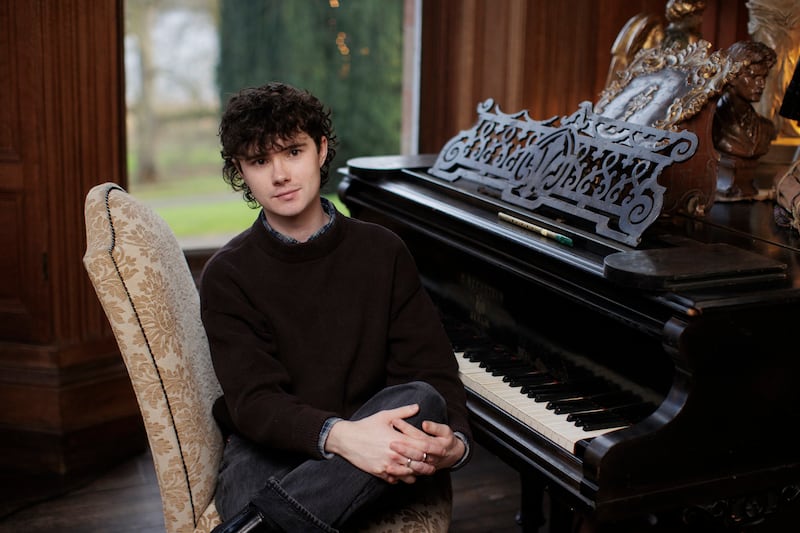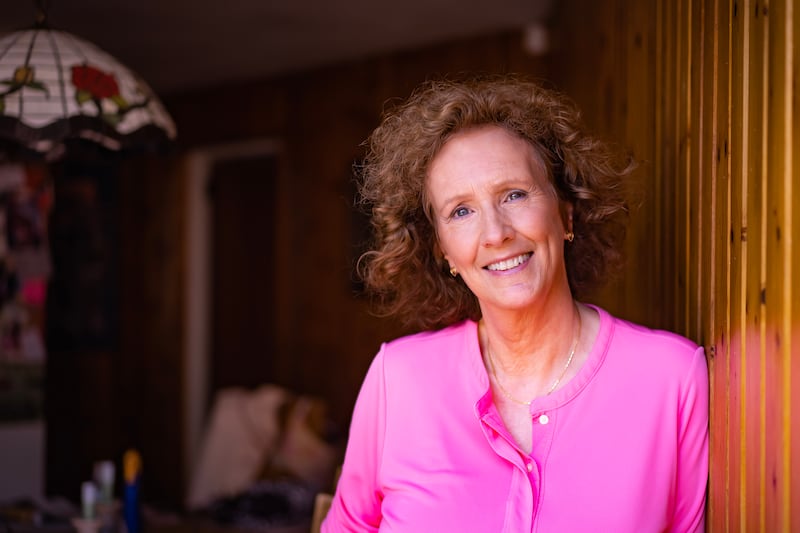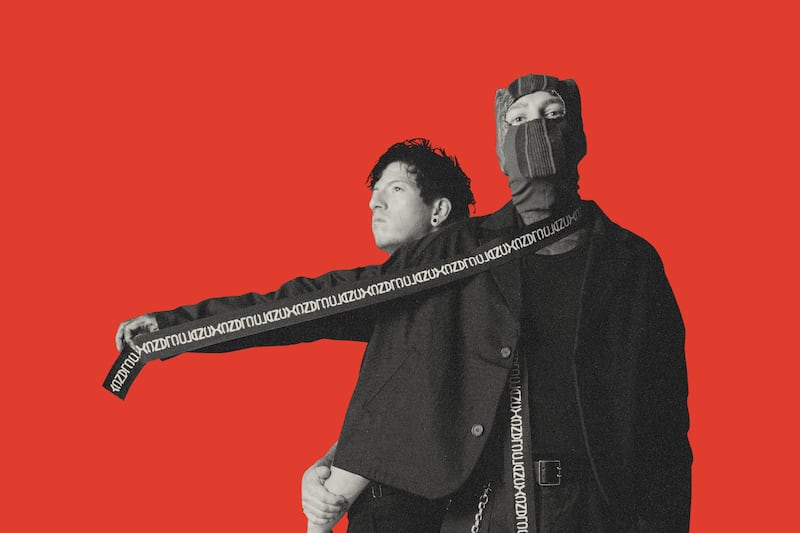UNUSUALLY, this column is a follow-up from last week's which looked at the threat to the musical
heritage of the Cathedral Quarter in Belfast, the setting for the seminal Harper's Gathering of
1792 (folk musicians think in time scales like that!).
What I wanted to press home was that that musical heritage stretches throughout the centuries
and has been re-moulded and re-imagined by different generations and the technologies they
have at hand. It will be thus in the future.
Now comes word of a multi-media work by the Cork artist Aideen Barry, who has been
commissioned to create an "it sounds crazy but it. might. just. work" installation inspired
by Bunting's collection of the tunes played on those sultry July days 228 years ago.
Aideen was awarded the €15,000 commission for her intriguing response to an invitation for
proposals issued by Music Network and the Irish Traditional Music Archive in 2019.
In 1792, Armagh-born Edward Bunting was commissioned by the organisers of the Belfast Harp
Festival to notate and preserve the music of the last of the professional Irish harpers. Bunting
strove to preserve indigenous culture in Ireland at a time of great threat and this task was to
prompt a lifetime of collecting and publishing Irish traditional music.
His first collection, A General Collection of the Ancient Music of Ireland [Volume 1], appeared in
1797 and its influence continues to be seen in live performance, print, recorded and online
settings today.
The industrial revolution was only around 30 years old at the time; the idea that the rise of
the machine and the spread of the mechanised factory system might lead to an existential
threat that would leave the planet fighting for its life would have sounded preposterous, but here
we are in the early 21st century and the fear that we have injured the Earth beyond salvation is
beginning to dawn on us.
In her work, Barry draws parallels between Bunting's preservation of ancient Irish music and the
existential threat to all human culture and existence.
"What I wanted to convey was the original mission of Bunting, because what he did was
something quite remarkable. Had we not had his intervention at the time, we wouldn't
have had the UNESCO World Heritage status that the Irish harp has today," says Aideen.
"The harp wouldn't have an instrument that clearly plays an important part in Irish identity in
terms of music and culture and even in visual language as well."
Ever the iconoclast, the Aosdána member and Associate Member of the Royal Hibernian
Academy has enlisted the help of Inuit throat singer and electronic musician RIIT, Irish harper
Elaine Hogan and artist Margaret O'Connor, hence the tri-lingual title of the piece, Oblivion/Seachmallacht and the word for 'oblivion' in the Inuit language – which sadly uses a character set that this computer can't replicate. Apologies but let's just call it 'Oblivion' for short.
For Aideen, Oblivion is "an alchemy, turning the sounds of the past into a completely unheard-of
landscape that will only appear for an extraordinary moment, like an eclipse or aurora borealis."
Through the use of cutting edge technology, archive materials, sound, music, design and film,
she poses questions that are sadly relevant today: "What is the role of the artist in a time of
great uncertainty, when we may be facing oblivion as a species?"
She believes that it is important to ask the right questions in the here and now.
"What if we are the last ever generation of artists left to live? If environmental collapse is really
around the corner what responsibilities do we have to face up to and how can we interpret the
notion of oblivion in our role as creators?"
The United Irish rebellion took place just six years after the Harper's Assembly, but that pales
into insignificance with the threat to the very existence of all of mankind.
"I feel that not many of us are actually talking about possibly us being the last generation of
artists to live on the planet," she says.
If you think that is a tad apocalyptic, cast your mind back to the images this year of the huge
fires in Brazil's Amazonian rainforests, rightly called 'the lungs of the Earth'.
"When I made the proposal in 2019, we didn't have Coronavirus and Covid but now we are
living in what could be interpreted as an 'environmental apocalypse. Or relationship with nature
has created this illness which has brought the whole world to a grinding halt.
"What do you do as an artist? How do you comment about these seismic changed that are
going to happen and I feel that those things must also have emotionally affected Bunting at the
time.
"'What is my role here as a composer of musician and a lover of music, what is my role in
intervening here?'
Music Network's CEO Sharon Rollston said that the commission in partnership with ITMA builds
substantially on a previous Music Network project in 2016 which took the Bunting Collection as
its inspiration.
"A significant part of this project involved Music Network documenting solo performances of the
66 tunes of the first volume of the Collection in ITMA's recording studio in Dublin.
"The resulting bank of audio-visual recordings by 10 of Ireland's leading contemporary
harpers acted as a catalyst for further exploration of new ways to introduce this important
collection – held in Queen's University, Belfast – and the musicians who perform it, to
wider audiences through an exciting cross-disciplinary approach."
Another recent interviewee on this page, Liam O'Connor, director of ITMA said that connecting
artists with archival material to inspire new art is a great privilege for the staff of ITMA.
"To have a visual artist of Aideen Barry's calibre 'drawing from the well' of digitised 18th century
publications and manuscripts by Edward Bunting is truly exciting," he said.
Oblivion will bring Bunting's life's work on a new and unexpected journey while connecting us
with our past, present and future.
"Along with our partners, Music Network and Special Collections & Archives, at Queen's
University Belfast which holds the Bunting manuscripts, we are all eagerly awaiting what
promises to be an inspiring multi-disciplinary installation.
"However, we are going to have to wait before we see Oblivion. It will be premiered at the Limerick City Gallery of Art from December 2021 to February 2022 and will feature a special live performance by RITT and Elaine Hogan on December 21 2021.
"A separate, unspecified 'commissioning resource' will also be provided by the Belfast
International Arts Festival to present a unique re-imagining of Oblivion in Belfast in 2022."
Given how the world has changed since the beginning of this year, 2020, who can even begin to
foretell what 2022 will look like?
